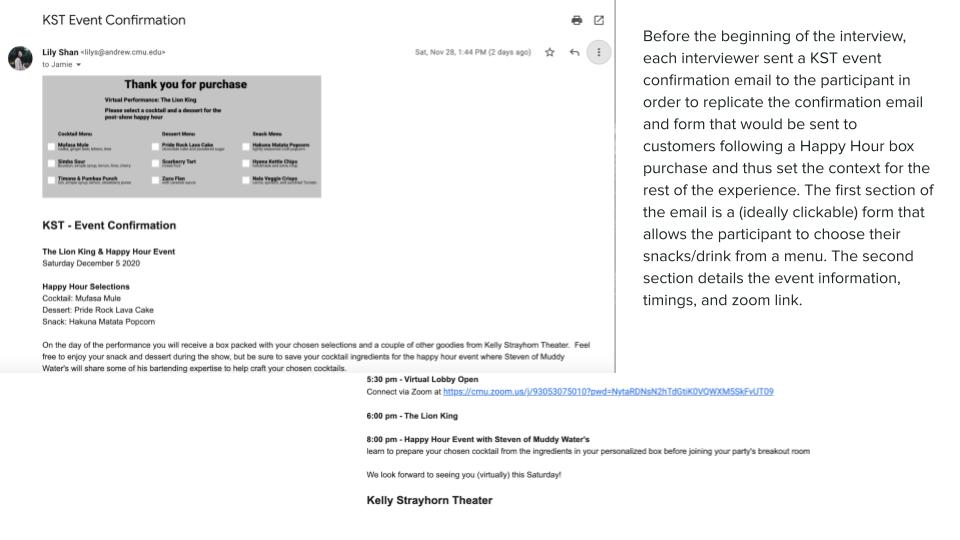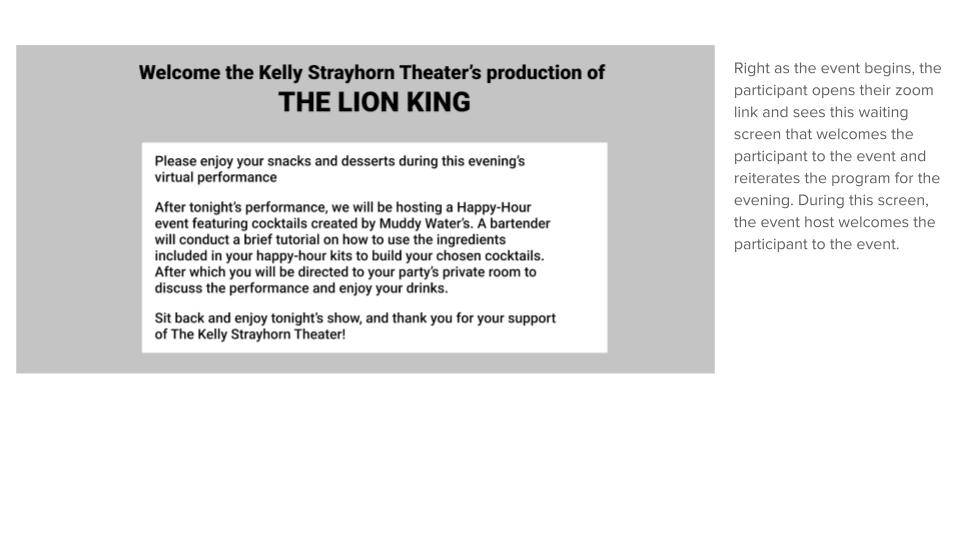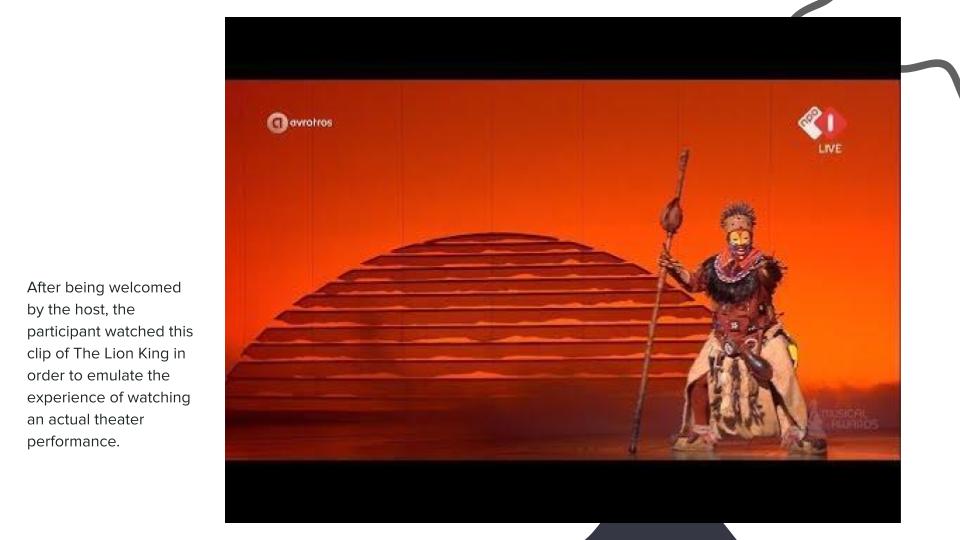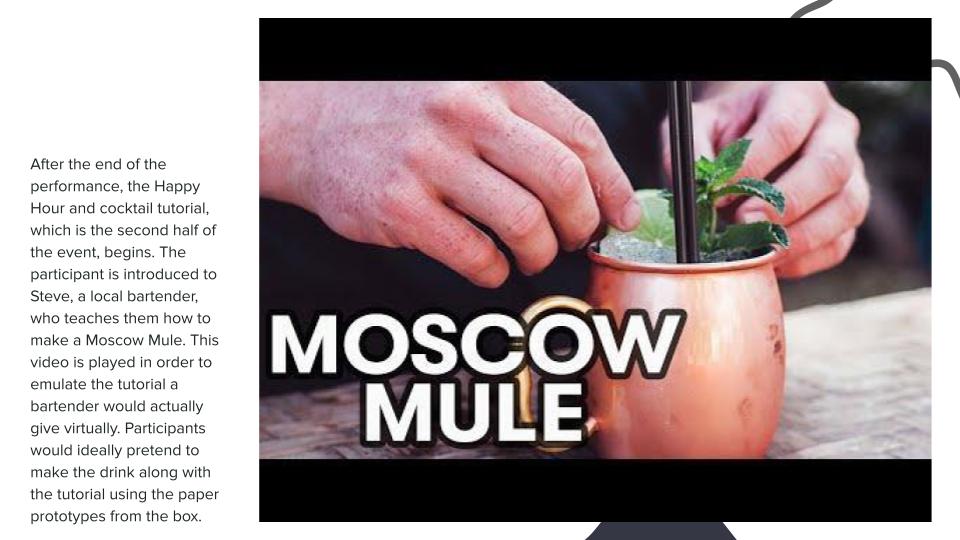Black Box Theater
The Problem | The Methods | The Major Insights | Experience Prototyping: Our First Iteration | The Final Solution: Black Box Theater | Reflection
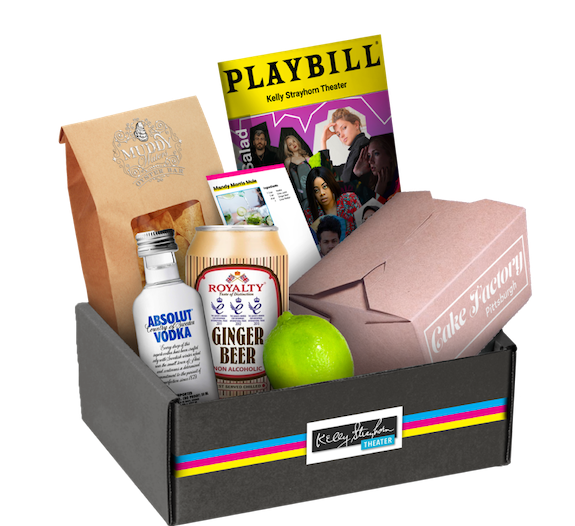
| Project Type: | Team |
|---|---|
| Role: | Researcher, Project Manager, Designer |
| Class: | User Centered Research and Evaluation (Fall 2020) |
| Skills/Methods Used: | Reverse Assumptions, Contextual Inquiries, Thinkaloud Protocol, Affinity Diagrams, Storyboarding, Walk the Wall, Experience Prototyping |
For this project, we partnered with Kelly Strayhorn Theater, a local theater in Pittsburgh, to help them come up with an engaging, yet feasible new experience that allows them to create meaningful interactions with their community during the COVID-19 pandemic.
Since COVID-19 has forced the Kelly Strayhorn Theater to shut down its physical spaces, they have had to quickly adapt to a virtual environment and overcome the challenges that come with this change. In looking at how to set KST apart in the hyper-competitive world of online content, our team kept returning to its incredible community as a potential differentiator. Thus, we asked ourselves: How might the Kelly Strayhorn Theater create an enhanced sense of community and togetherness within the limitations of a virtual environment?
Through various user research methods, we learned three things.
- First, theatergoers love theater primarily because it provides a space for strengthening social relationships. It helps them find and build off common ground. Furthermore, socializing is a narrowly defined word.
- Theatergoers wanted to focus on experiences with friends and family only - no strangers.
- Finally, what people missed most from in-person theater was the “night out” experience – a time dedicated to enjoying good food and amazing art, capped off with quality time discussing the show.
Thus, we want to bring the “night-out” experience into the homes of KST’s patrons with the KST Black Box Theater. Prior to live performances, friends can collectively purchase boxes to share the social experience from their individual homes. The boxes will include a snack, dessert, trivia card and cocktail ingredients from local East Liberty restaurants, and various performance memorabilia. Before the performance, a digital lobby will allow audience members to craft their chosen cocktail along with a bartender, before enjoying refreshments during a live stream of the performance. With our solution, KST will become a staple of patrons’ leisure activities. The novelty of the Black Box Theater events, opportunities to socialize with friends, and tie-ins to the beloved theater experience will help theatergoers overcome the monotony of traditional virtual content and prove that it is possible to bring theater into the home.
The Problem
How might KST create an enhanced sense of community and togetherness within the limitations of a virtual environment?
KST’s financial and operational viability has been severely disrupted by COVID-19, forcing the theater to close down and driving problems in attendance and funding. Furthermore, theater is also now competing in the hyper-competitive world of online content, and KST’s limited budget means it will unlikely capture users’ attention with its content alone. Instead, what made KST successful before was building a tightly-knit community that was loyal to the theater’s content. This needed to be the focal point in reviving the theater.
The Methods
For a fully detailed report about our entire research process: Research Report
Reverse Assumptions
After doing some initial background research regarding what the current state on theater is (apps, emerging technologies, business changes due to COVID, current virtual theater events, general statistics and insights) and analyzing data provided to us by Kelly Strayhorn theater in regards to their patrons and events, we decided to do a reverse assumptions activity in order to challenge our current perspective on how we could revive and revolutionize theater during the COVID pandemic. This was a great brainstorming activity that opened our minds for what could be possible as we moved forward with the research process.
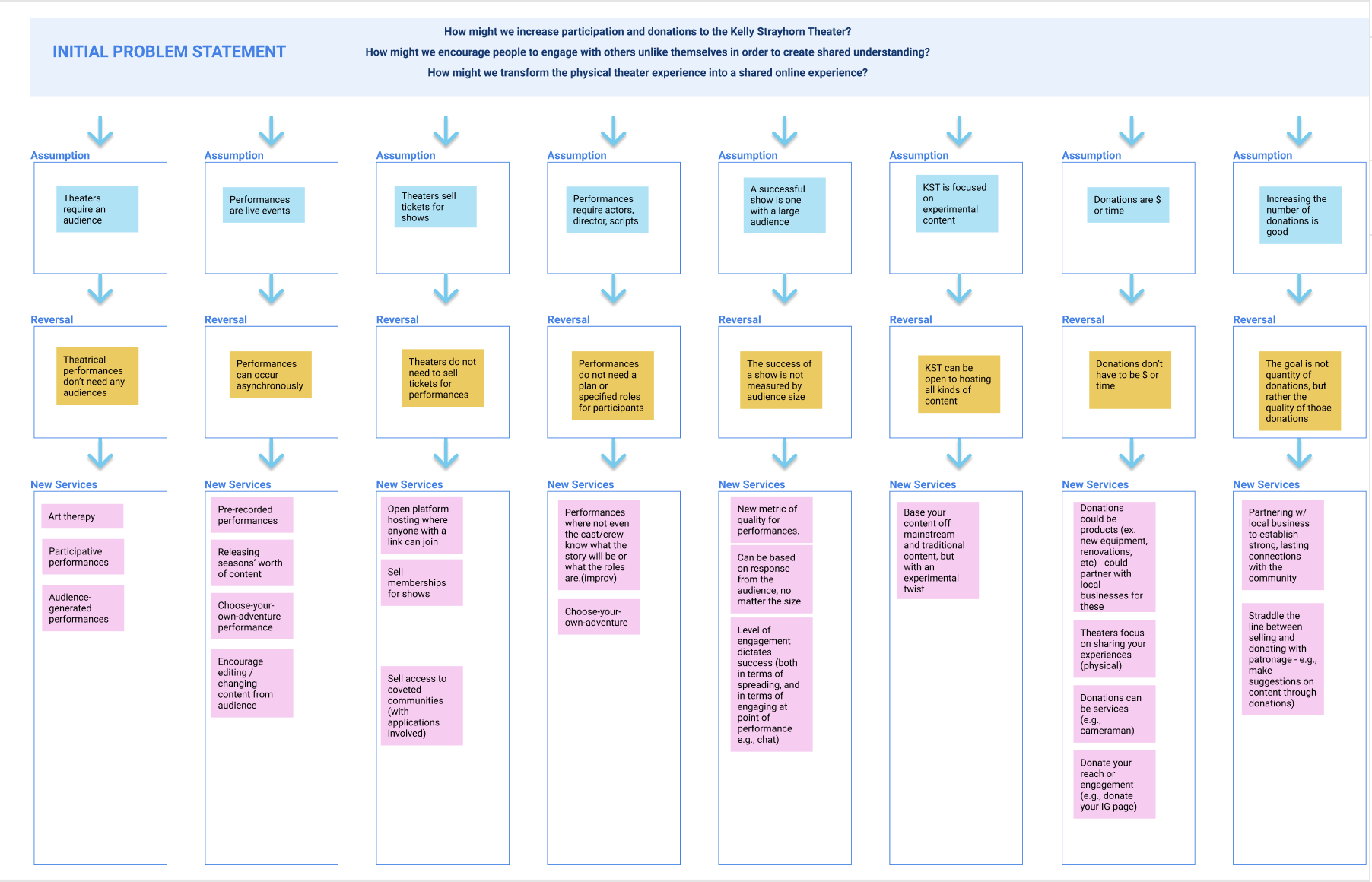
To see the full reverse assumptions activity: Figma
Thinkaloud Interviews
Next, we conducted five thinkaloud interviews on the twitch.tv website, which is currently one of the most popular live streaming platforms. We chose twitch.tv to test with our participants because we wanted to see how current live streaming platforms operate in creating a loyal community for their entertainers. Furthermore, much like Reddit, Twitch is a site with niche, yet loyal fans, and we wanted to see how well its functionalities and features would be received by our participants, who are unfamiliar with the platform and are regular theater-goers. We believed that Twitch’s community building and facilitation was a large part of their success. Therefore, from these interviews, we wanted to see how we could apply those attributes to a potential solution for KST.
Based on our participants’ feedback, we found ten major usability findings. Here are two that particularly stood out:
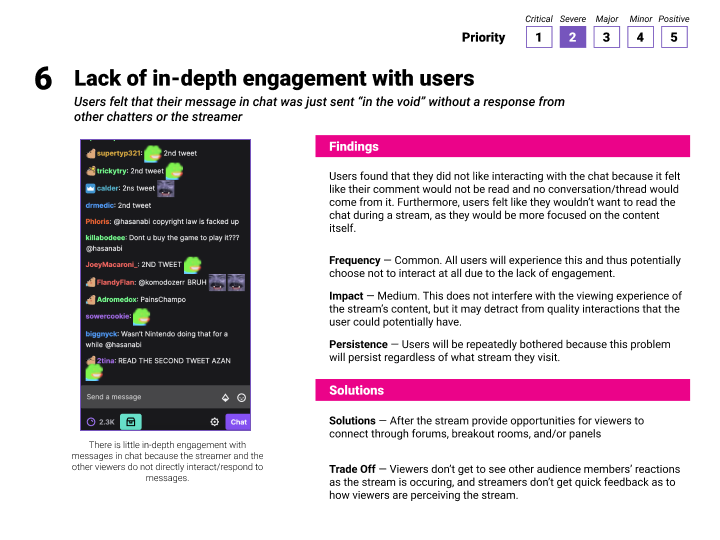
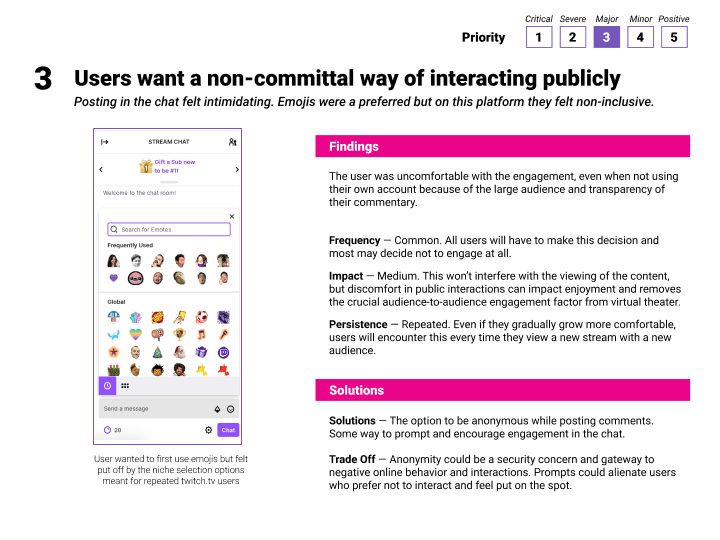
Our main insights from these findings were:
- Users want focused and meaningful conversations that general chats can’t satisfy.
- Users want meaningful rewards and reciprocity from artists if they show support.
- Users want to have more visibility into the behind-the-scenes of theater production.
Contextual Inquiry Interviews
After analyzing what current platforms that are successful during COVID are doing, we then conducted five contextual inquiry interviews using a combination of artifact analysis and directed storytelling techniques in order for our participants to provide us context into their theater experiences.
Our target persona that we wanted to interview was someone who had some previous background in theater and is an avid attendee of the performing arts (pre-COVID). We chose this persona because we wanted to understand how one’s past experiences in the performing arts would shape the way one consumed and engaged with theater shows.
Using the information our participants provided to us, we created an affinity diagram to organize our participants’ thoughts in regards to their relationship with the performing arts and the larger community surrounding it.
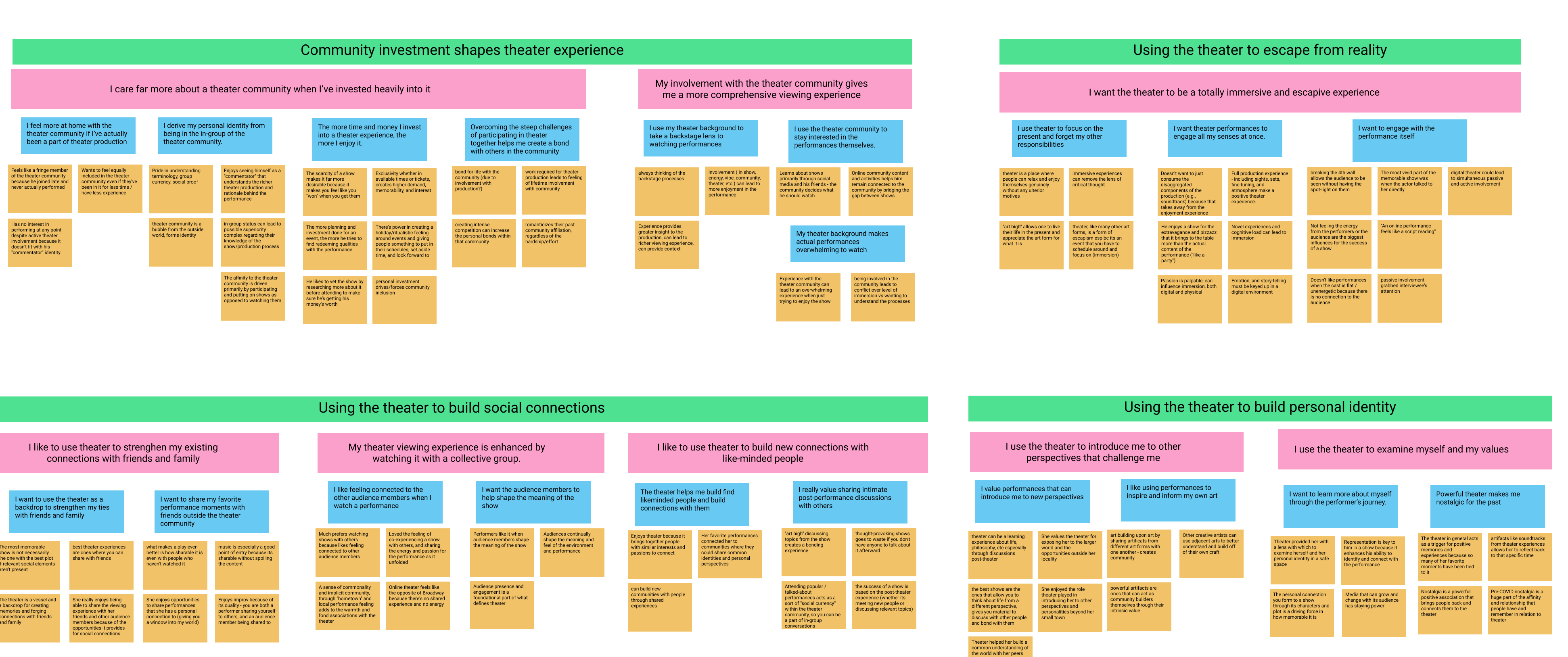
To see the full affinity diagram in detail: Figma
To summarize, we consolidated what we learned into six main insights:
- Theater is an inherently social activity
- People use theater to introduce themselves to new, challenging perspectives
- Theater is a means to strengthen existing connections with friends and family
- A good performance is immersive and escapive
- Theater can be a tool for experiential learning/exposure
- Frequent and intensive community involvement is rewarding
Storyboarding and Participant Feedback
In an effort to explore ways of improving Kelly Strayhorn Theater’s audience engagement in a virtual environment, our team used our previous insights and affinity diagram to rapidly generate ideas and identify user needs. We then created 12 storyboards to address those user needs, and tested those storyboards by conducting the speed dating method with 4 participants. Speed dating is a type of interview method in which the interviewer will rapidly present a series of storyboards depicting a diversity of different ideas. The participant will then give their first impressions and general thoughts regarding each idea.
These four storyboards were our participants’ favorite ideas:
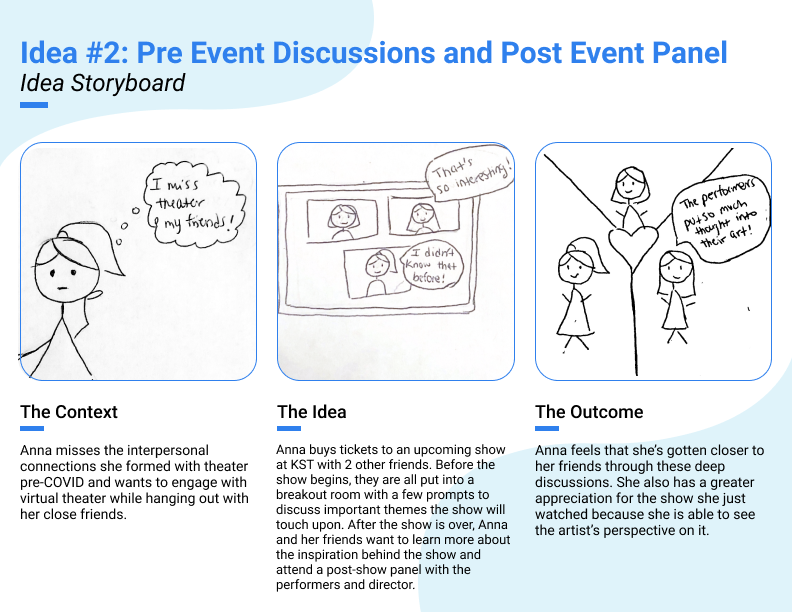
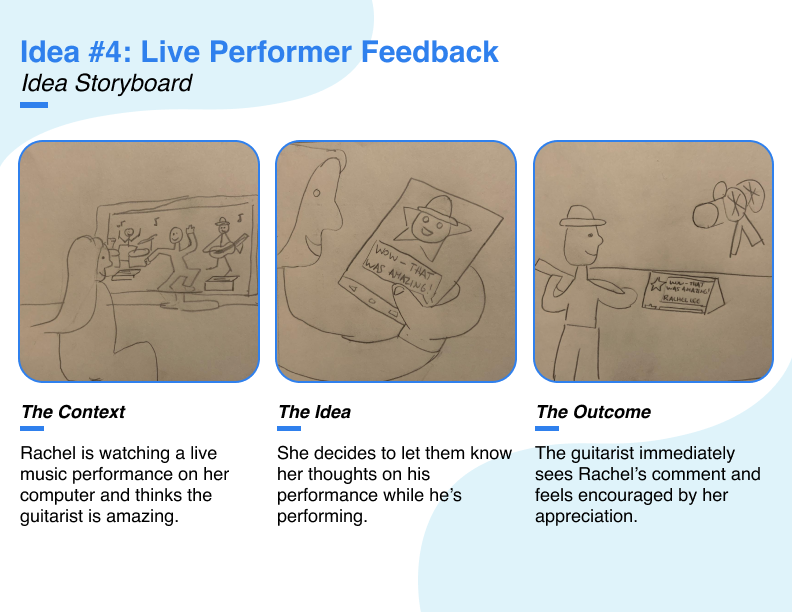
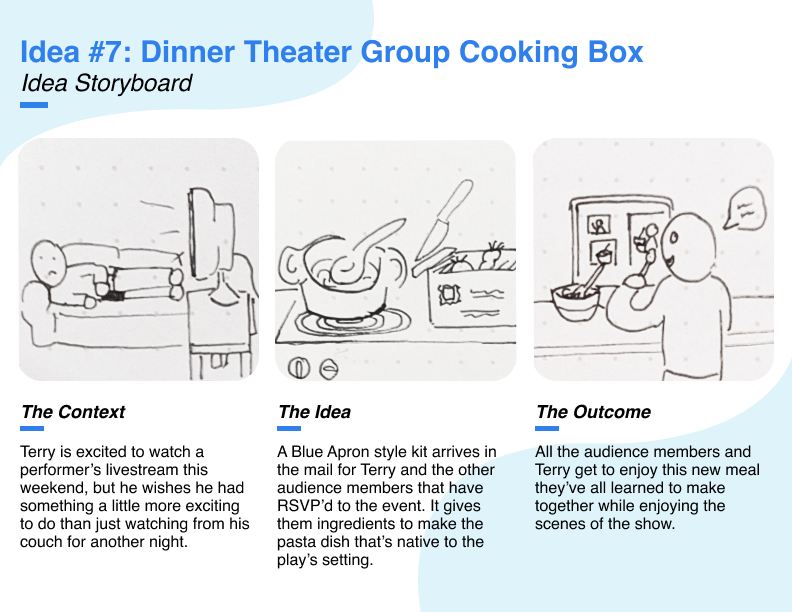
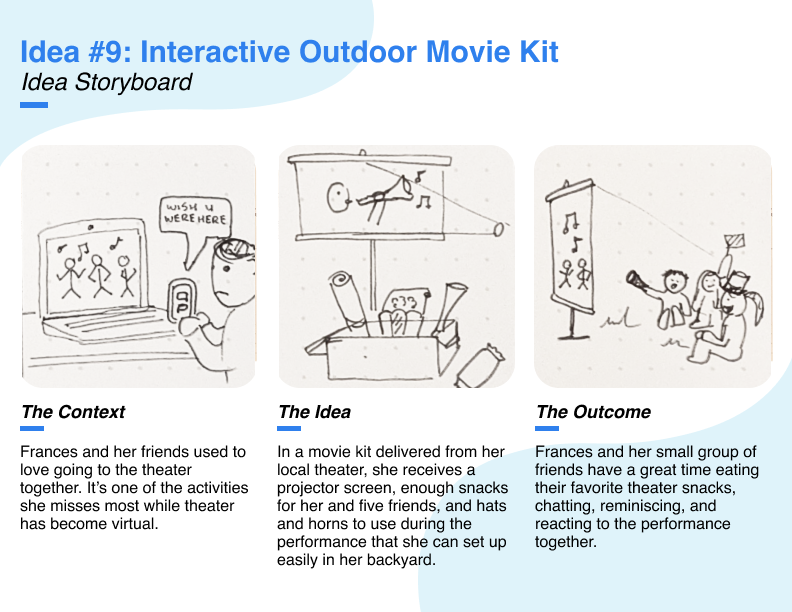
Based on the participant’s feedback, we found that:
- The actual content of the show is often not as important as the group dynamic within the audience or the meaningful communication that surrounds the performance.
- People want to interact with performances in a way that is in line with their comfort level, but that still feels earnest.
- Meeting new people is not as important as having an experience with an inner circle of friends.
The Major Insights
- Theater is about strengthening social ties; the performance is just the intermediary: Theater loses all value when it’s viewed individually. People want to use the theater to bond with friends, and share memorable moments together.
- Theatergoers want to socialize primarily with friends and family: Online relationship-building with strangers feels more like a chore than a perk. Social interaction needs to remain with theatergoers’ social bubbles.
- Theatergoers miss the experience of a “night out”: Online theatrical content can’t replace the excitement of co-experiencing a live event, complete with food, drinks, and post-performance discussion.
What Do People Think?
Quotes from our interview participants:

|
"It's less about the show we were watching and more about the social interaction...that's what makes things exciting. The show is almost like background noise." |

|
"I kept the souvenir even though the play was terrible because I still loved the experience.. It’s one of my favorite memories with [best friend]. |

|
"I miss the theater being a special occasion… I could get dressed up, have dinner with my family after, and just laugh over some drinks." |

|
"Sometimes I wish I could see a performance outside my home town, but that would mean I’m not with the people I’m close to, so it would lose something special." |
Experience Prototyping: Our First Iteration
Taking into consideration the feedback our participants gave us with the previous speed dating interviews, we created 8 storyboards (both new and old) that incorporated the new design opportunities we discovered. After weighing our new ideas, we decided to pursue the Cocktail + Dessert Happy Hour idea because our research suggested that participants wanted some kind of event to orchestrate around in order to give them an excuse to hang out. Lastly, our Cocktail + Dessert Happy Hour idea allows for more flexibility in terms of letting KST determine what content they prefer to show.
Our idea focuses on the excitement and novelty of receiving “surprise” packages. The virality of “unboxing” videos is a testament to people’s affinity for this format and their willingness to give feedback on items in a gift box. We plan to recreate this in a low-fidelity experience prototype that combines physical prototyping and bodystorming with both in-person and virtual components.
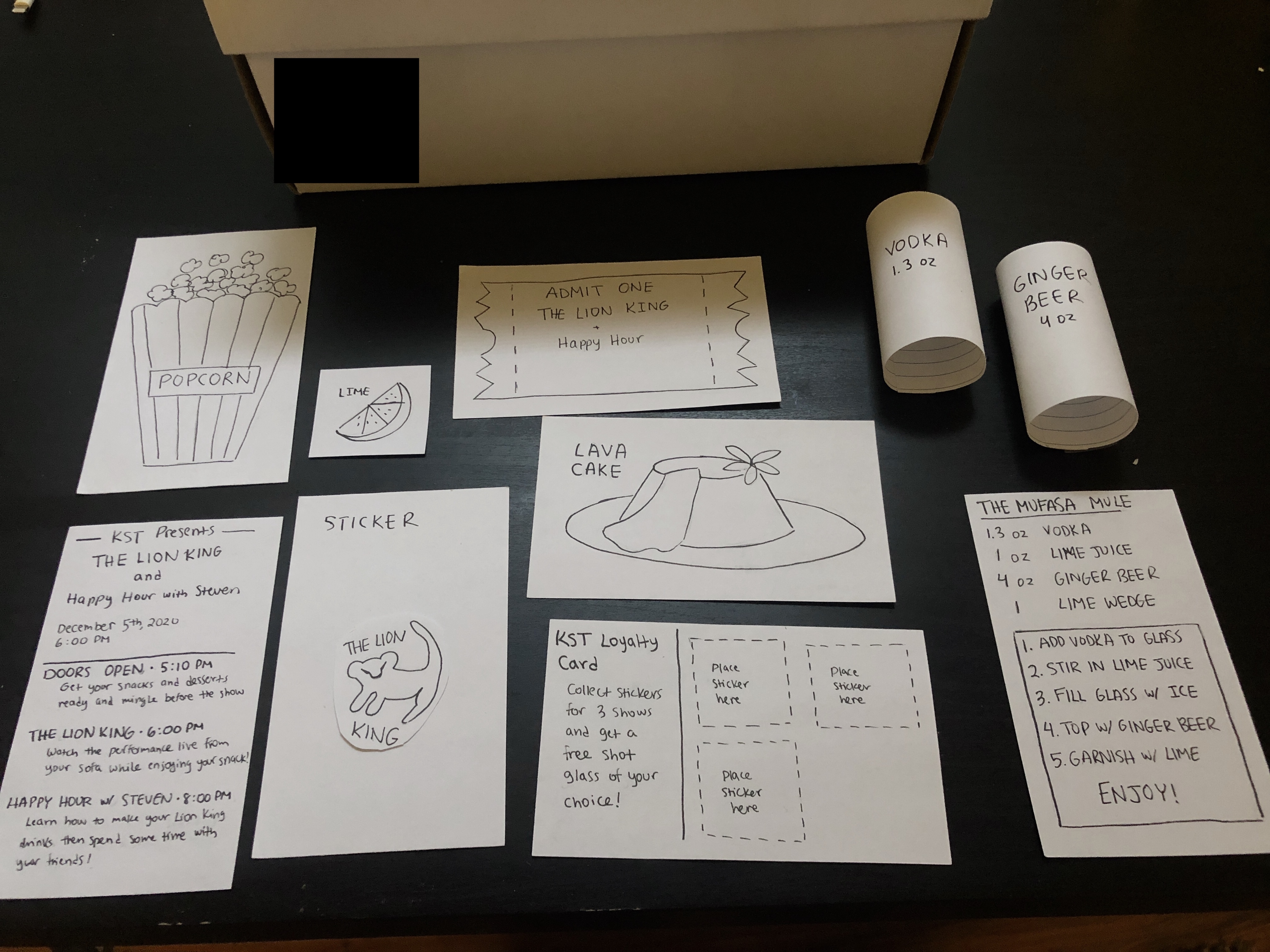
Our participants were each provided a box that contained:
- The ingredients for a cocktail inspired by the performance/performer that the box is for - including alcohol, mixer, and garnishes
- A card containing the recipe to create the cocktail
- A program containing information on when and how to attend the show, happy hour, and post-show discussion
- A physical ticket that can be kept as an artifact
- A themed sticker along with a loyalty card which the sticker can be placed on. Three stickers (coming in three boxes for separate performances) can be redeemed for a free shot glass of the recipient’s choice
- A snack and themed dessert from a local restaurant in the East Liberty area
For this prototype, we understand that a significant part of its appeal will be the multi-sensory experience of interacting with the items received in a box and using them as part of a larger experience. As a result, we want to make sure that we’re testing with people in-person, and are turning to people within our household or in accessible households that have a strong affinity for the theater already.
An explanation of our experience prototype:
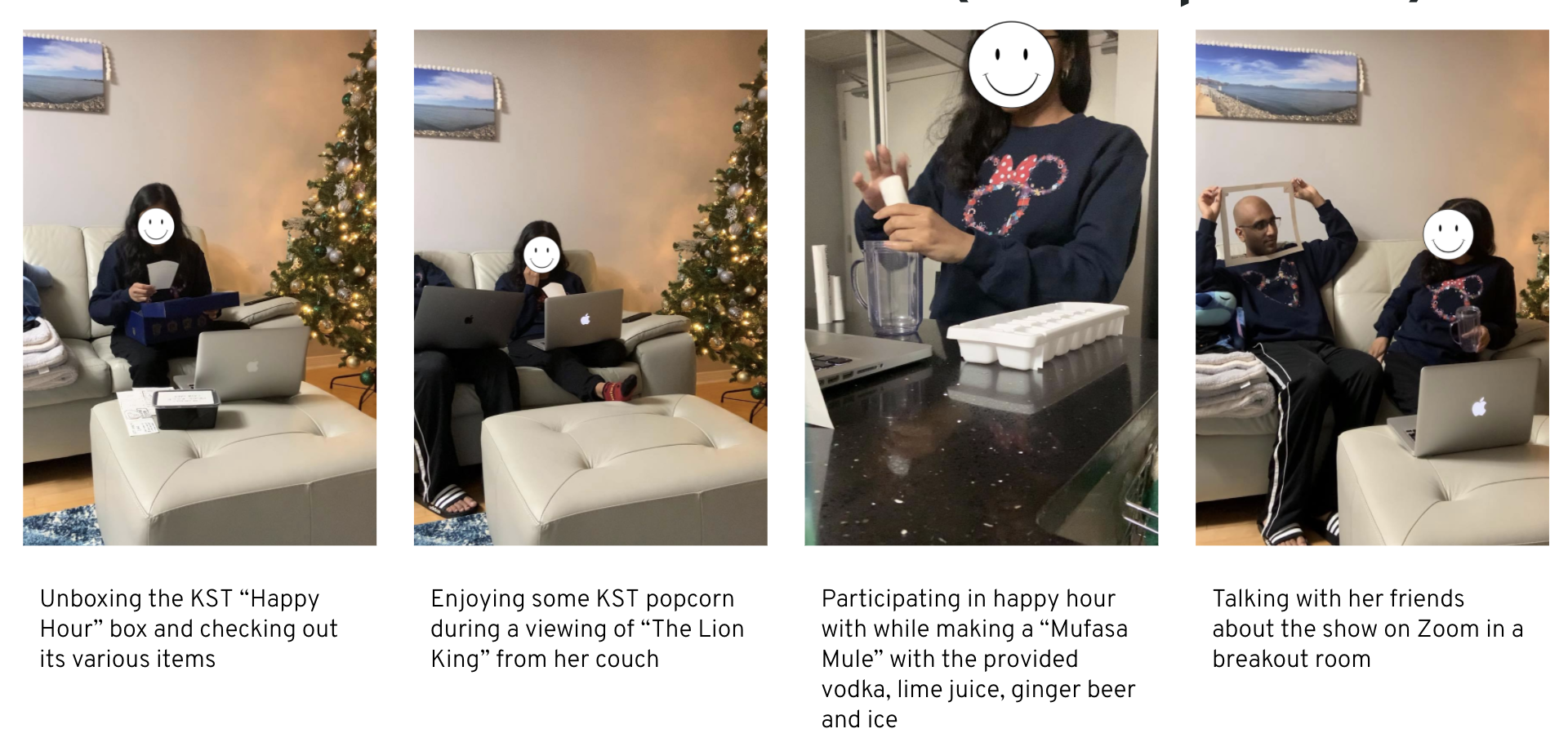
After testing this prototype on four different participants, we discovered a few aspects of our prototype to improve upon:
- Users want transparency and a clarity on the items they’re purchasing for their box
- The hygiene and care of the box is critical to create user comfort
- The box items and box itself need to feel more like a “collectible” to make the experience feel like an event
- Additional content should be scheduled before the event, with clear positioning that it is optional
- The Zoom platform in general, and breakout rooms in particular, is not preferred by users for leisure events and socialization
- People’s main perceived value in the event is how it creates opportunities to socialize with friends
- The social experience needs to be translatable to a virtual environment, because users are still highly uncomfortable with in-person gatherings
- The social experience will draw value from its novelty, and won’t be a weekly staple in people’s lives
The Final Solution: Black Box Theater
Finally, we took the feedback and insights we garnered from our previous experience prototype to create an improved iteration. First of all, we decided to make the event-hosting platform Instagram Live instead of Zoom. Zoom’s main appeal – breakout rooms – are unwanted by users that would rather chat on their own preferred platforms, so the only feature we need from our platform is the ability to live stream while being convenient. Furthermore, IG Live doesn’t have the messy connotations of work. Given KST’s wider reach and accessibility of Instagram, we’ve elected to switch platforms to IG Live. We also moved the happy hour to before the performance, with very clear times communicated for each of the drinks being made, so that users can join optionally (or make their drinks on their own time) and potentially enjoy cocktails during the show.

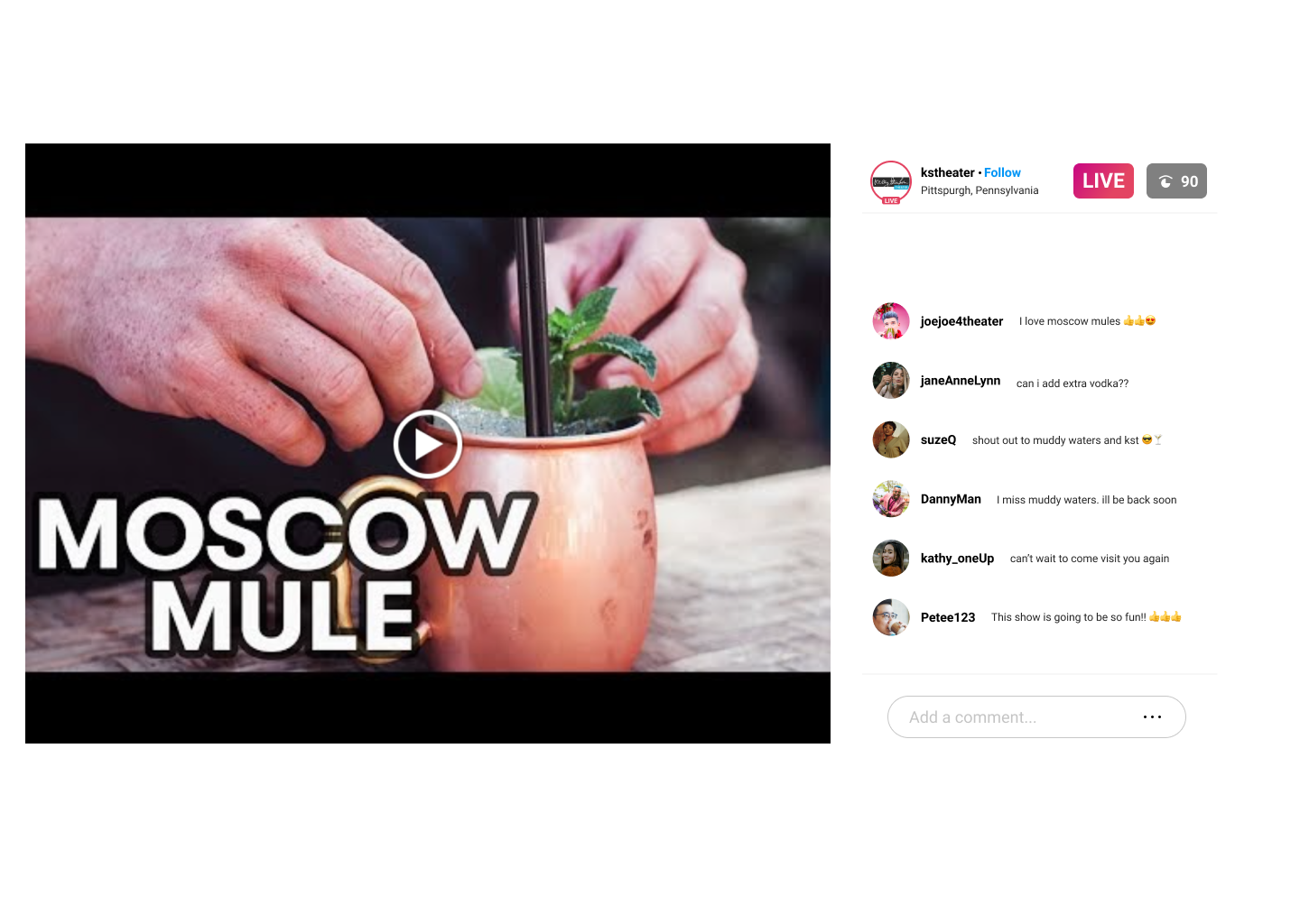
Since users wanted more transparency on the box items, we created a more intricate flow that helped users understand the purpose of the box, the showtimes and the actual items in the box. We also included significantly more detail on the box items, including pictures, creating more clarity on how they tied to the performance and events, referencing the vendor for items, and making it clear what made the items unique.
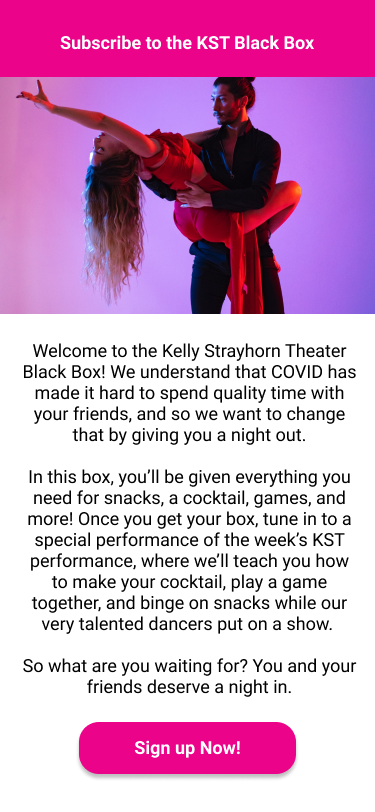
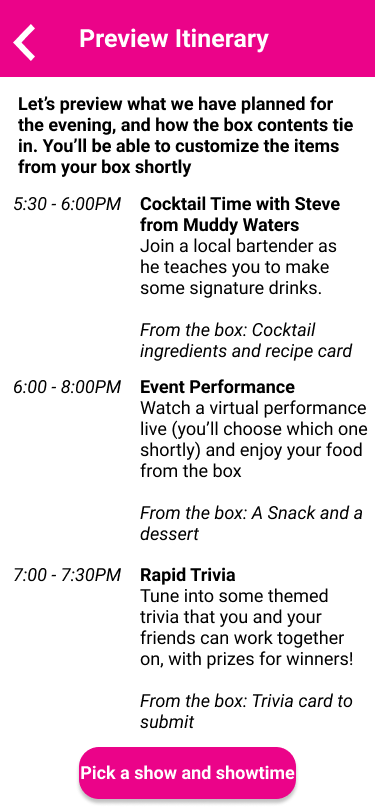
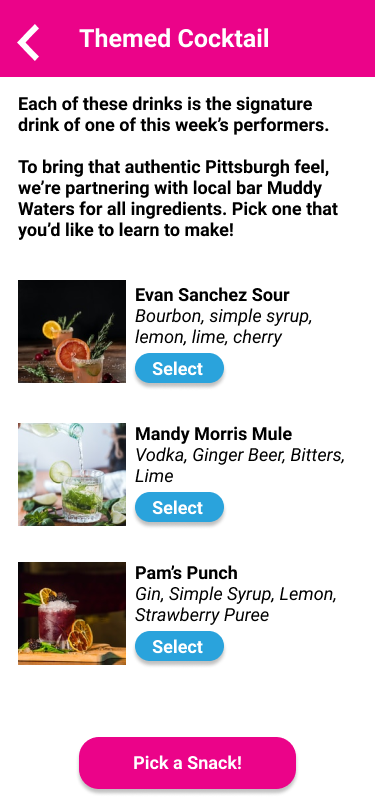
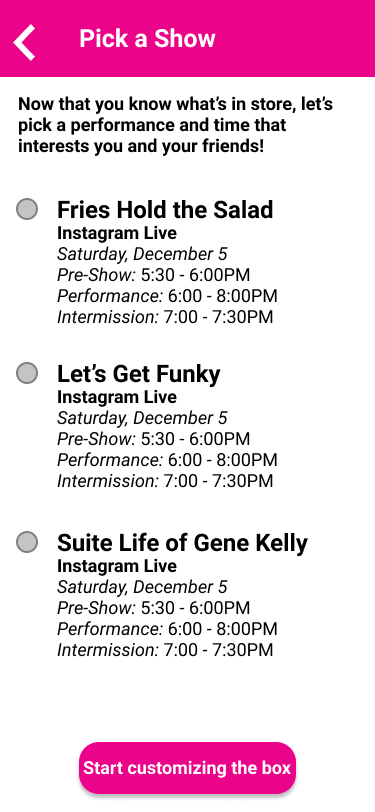
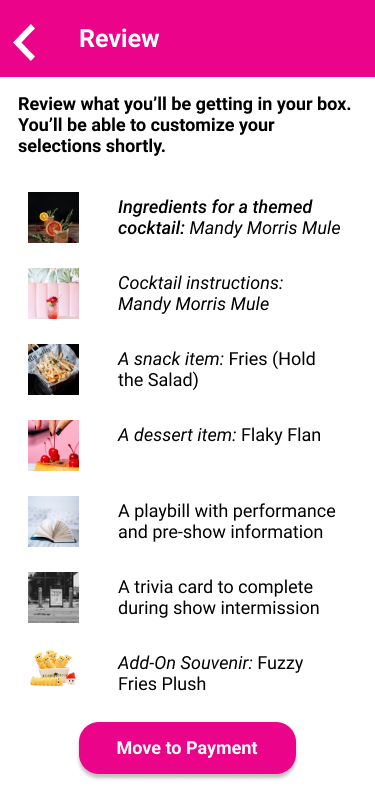
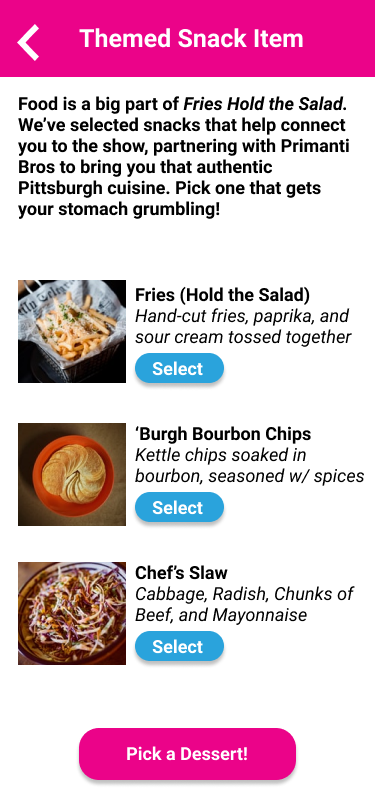
Users told us they wanted the box to feel special because it was a treat and not something they would buy every week. To cater to this, we included add-on options that were relatively cheap but that help make every box feel special and unique. In order to increase clarity on box items, we also summarized the order through a thorough purchase review and confirmation of information.
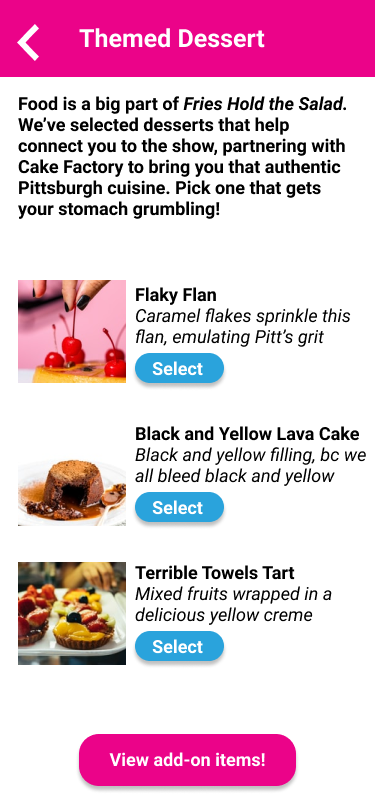
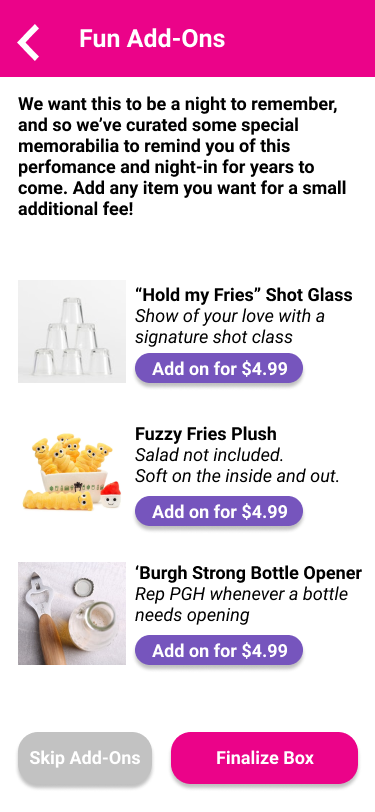
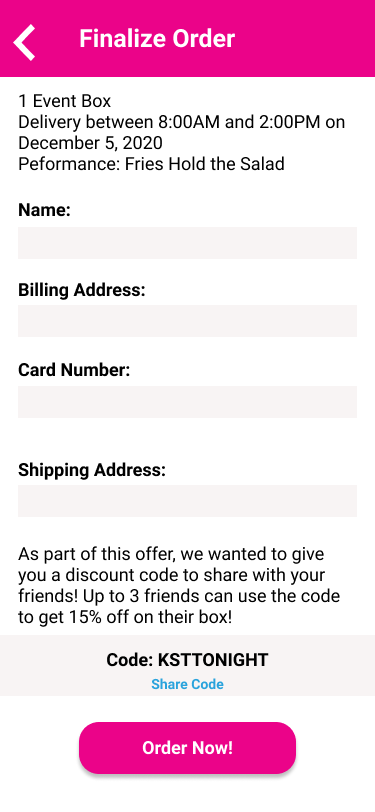
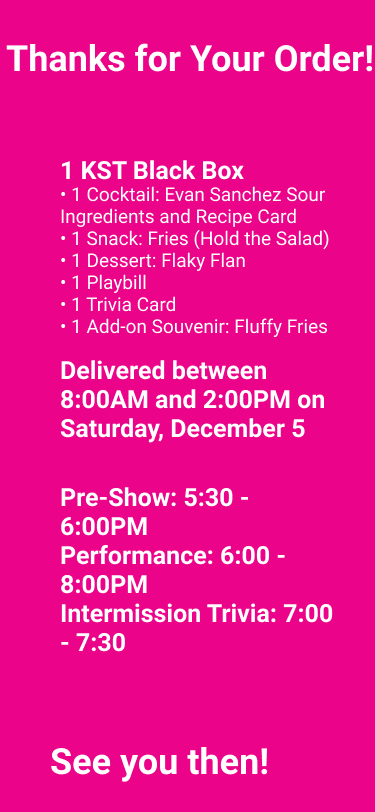
Users wanted the event to feel special and that included the box itself. We updated the box’s visual fidelity to feel special and to make the box itself a collectible as opposed to the plain, repackaged shoebox we were using. In this updated version, our box aims to be a surprisingly grand experience, black and unassuming on the outside, and festive on the inside as an unexpected treat to first-time users (and a deterrent to theft that some participants mentioned).

To add to the unboxing event, we also updated the memorabilia’s visual fidelity to feel more grand and exciting. Based on user interest, we transformed the original program guide to a playbill to hearken back to the days of physical theater. We also added in a trivia card in order to provide more opportunities for socialization, so that users can use the physical card to answer trivia questions during intermission, which they can then post to social media for prizes. That way, users can interact with each other organically during the show, and engage in much-needed socialization.

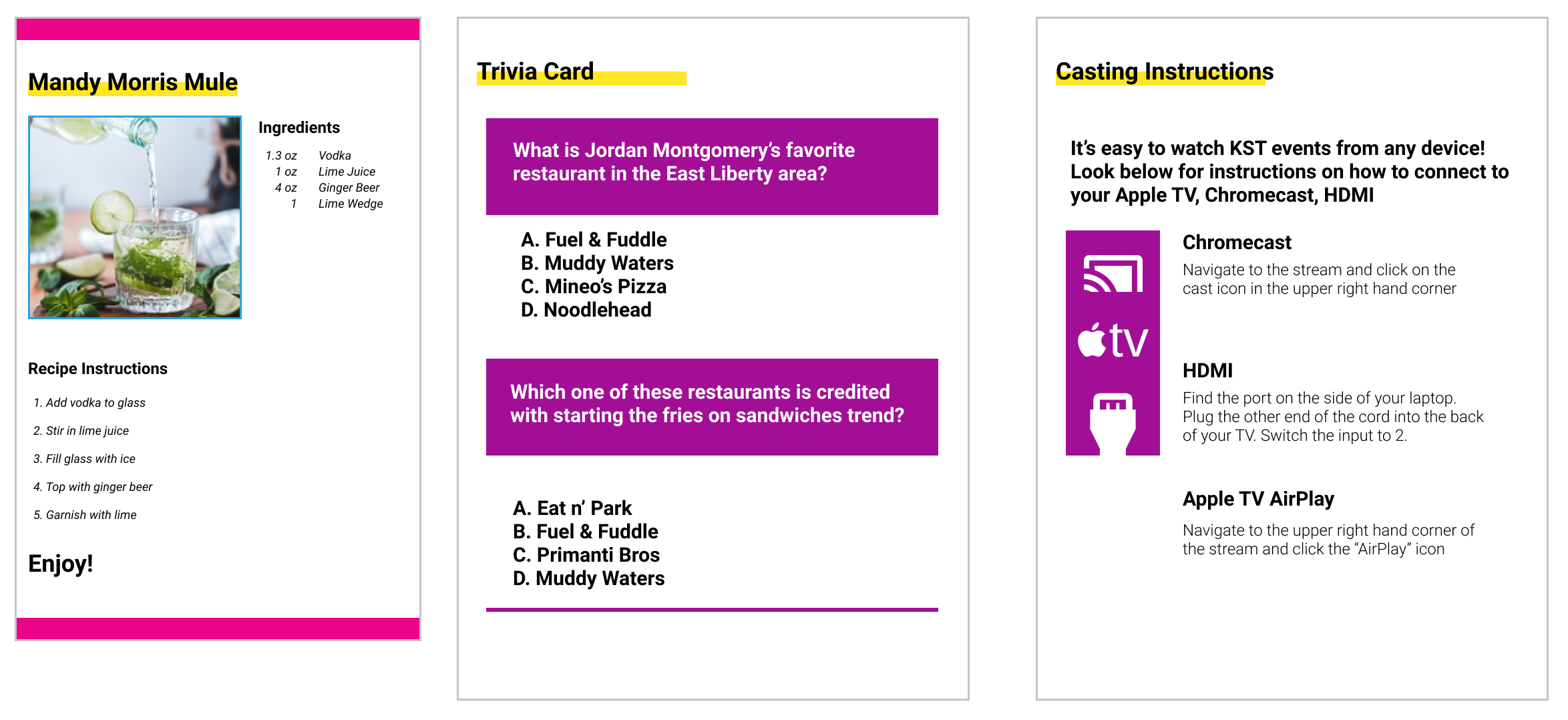
Finally, we updated our mockups of food items in order to take into consideration our participants’ concern for sanitation – everything is in sealed packaging now, with ice packs included in the box.
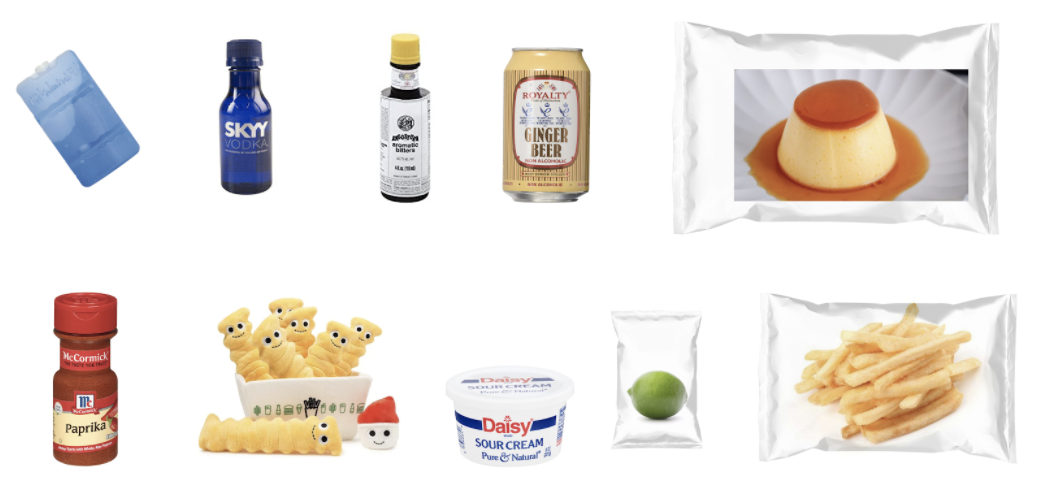
Reflection
Overall, I learned a lot from this massive project – from virtual teamwork and collaboration, to conducting and facilitating interviews, to thinking critically about data, feedback and insights that took into consideration our participants’ thoughts and opinions. Before this project, I had previous experience with user testing and thinkaloud interviews, but I had never employed such detailed analysis and application of these research methods and ideation techniques that I performed during this project. One major challenge that my team and I faced during this project was figuring out how to consolidate all of our insights, data and findings into a cohesive solution, as we had done so much research throughout the entirely of the semester, from multiple different forms of interviews, to KST customer data, to the background research we did at the start of the project in regards to the current state of local theaters. We also had to make sure to tie our solution back to our stakeholder’s goals – ensuring our idea was feasible, profitable, and marketable, all within the context of the COVID-19 pandemic. Ultimately, this project allowed both my team members and I to think critically and creatively and to deeply consider how the experiences and needs of our participants can create an end product that fulfills desires they might not even know that they had.
< Back to Projects
